- 09/05/2022
How To Use Mediums With Oil Paint


How To Use Mediums With Oil Paint
Using oil paint opens up a world of possibilities. This versatile material can be used for classic portraits, spectacular landscapes, or modernist, abstract works of art.
You might have heard of using mediums with oil – but where to start? We’ll explain what mediums are, the types available to you and the incredible effects that you can create by introducing something extra to your oil painting.
We stock a huge range of amazing oil mediums and solvents from top brands like Bob Ross, C. Robertsons, Winsor & Newton and Pebeo.
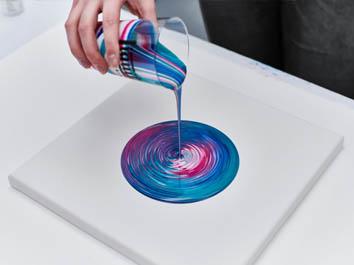

What Is Medium?
In simple terms, an oil paint medium is a substance you use to change how paint looks and behaves. There are lots of different substances that can be mixed with oil paint to alter it, such as linseed oil , stand oil and Liquin™.
Solvents, like turpentine, can also be used with oil paint to change its consistency. Using mediums means you’ll be able to use a huge range of different techniques and styles within your artwork.
Medium aren’t only used with oil paint. They are also commonly used with inks and acrylics.
Types Of Mediums For Use With Oil Paint
There are a handful of materials used to create mediums or solvents, each bringing their own qualities and effects to oil painting.
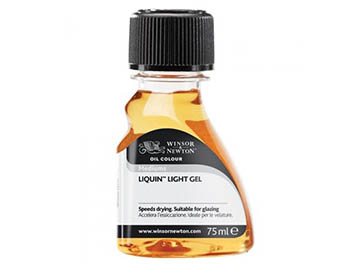

Linseed Oil
Linseed oil is a popular choice of medium for many reasons. It slows the drying time of oil paint, creating a glossy affect. It also changes the consistency, giving paint a thinner, oilier texture.
When using linseed oil, it’s best to plan carefully. You’ll want to use a little in your base layers and add more as you go, so the final touches take the longest to dry.
You can make your own medium by mixing linseed oil with distilled turpentine. Mix these in a container (with 2-parts linseed oil to 1-part distilled turpentine), then wait for them to bind, which can take a few days. This will make your oil paint thicker and more robust, but will extend drying time.
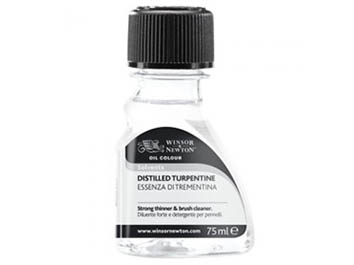

Turpentine
Technically a solvent, when distilled turpentine is mixed with oil paint it shortens the drying time. This occurs as turpentine dilutes the paint, while a chemical reaction causes the paint to dry out more quickly.
This makes distilled turpentine ideal for base layers and building the foundations of your piece – without waiting an age for it to dry.
Mix 2 parts oil paint to 1-part distilled turpentine. Add more for a thinner paint that takes less time to dry.
Distilled turpentine has another great benefit – it’s not prone to yellowing, so should make sure your paintings look great for years to come.
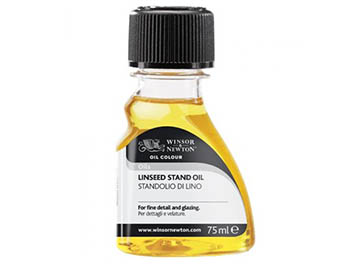

Stand Oil
Made from linseed oil, stand oil is a thick, treacle-like medium which slows drying time. When mixed with oil paint, it forms a glossy finish which reduces the appearance of brush strokes.
It’s a lot thicker than typical linseed oil, so you can use a lot less. Stand oil can also be used on its own, as a glaze, to form a lustrous finish.
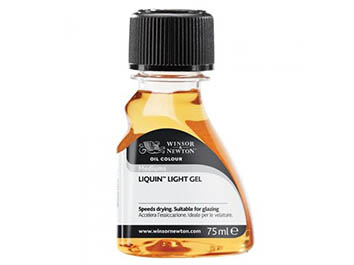
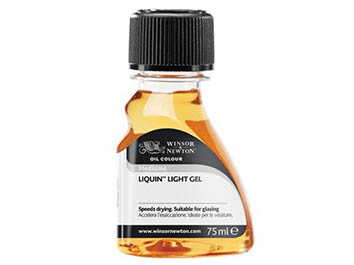
Liquin
Created by Winsor & Newton, Liquin™ is a medium used to speed up the drying process. Oil paint is notorious for taking a long time to dry, so if you want to work quickly – or apply base layers to your artwork – Liquin™ will come in handy.
It’s not for use as a final coat, but can be mixed with oil paint to cut drying time by half, while reducing the visibility of brush strokes.
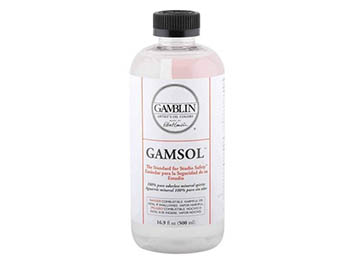

Mineral Spirit
Also known as white spirit, mineral spirit can be used to thin oil paint, affecting its consistency and flow.
You can also use white spirit to clear brushes. Make sure you use it in a well-ventilated area and avoid contact with skin.
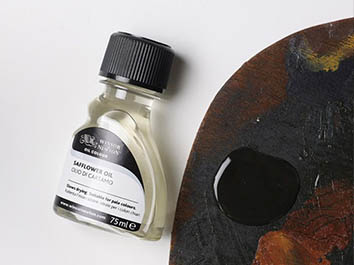

Why Use Mediums?
Speed Up Drying Times
Using distilled turpentine or white spirit helps to reduce drying time. This allows you to build up the first layer of your painting without waiting long periods in between sessions.
Create Glossy Surfaces
Mediums like linseed oil can be used to create a slick, glossy effect. This occurs due to the slowed drying time, which causes oil paint to dry with a luxurious shine.
Improve Flow
Using mediums like linseed oil or stand oil can make oil paint flow easier, which might make achieving the effect you’re looking for easier to achieve.
Reduce Appearance Of Brush Strokes
If you’re trying to capture smooth surfaces within your painting, introducing mediums like stand oil or Liquin™ could dramatically reduce the appearance of brush strokes.
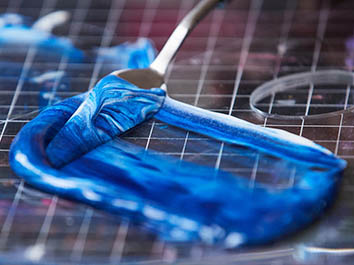
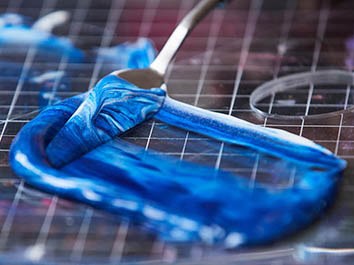
How To Mix A Medium With Oil Paint
Regardless of the medium or solvent you pick – and the effect you’re looking to achieve – the process of mixing an oil paint medium is largely the same.
Mixing A Medium: Step By Step
1. The – first, add a small section of paint to a palate or mixing pot.
2. Add the medium in gradually, mixing to around a 2 to 1 ratio with thinners. When using mediums to slow down drying time, remember that the more you add, the longer it will take to dry (and the glossier it will be).
3. Test out the paint on a scrap of paper to ensure you’ve achieved the right mix of paint and medium.
4. Once you’ve got the perfect blend, you can replicate it for the rest of your painting.
Remember, add quick drying layers first, then add less and less medium as you approach the final touches.


Can You Use Oil Paint Without A Medium?
You can use oil paint without a medium – painting directly onto a canvas should give you an excellent quality finish (as long as the canvas is primed).
That said, mediums can offer diversity and new ways to experiment with texture and finish – especially if you’re looking for a professional result. Now you know how they work, let your imagination run wild.
 Same Day Dispatch Mon-Fri Before 2PM
Same Day Dispatch Mon-Fri Before 2PM

 Free UK Delivery on Orders Over £50
Free UK Delivery on Orders Over £50

